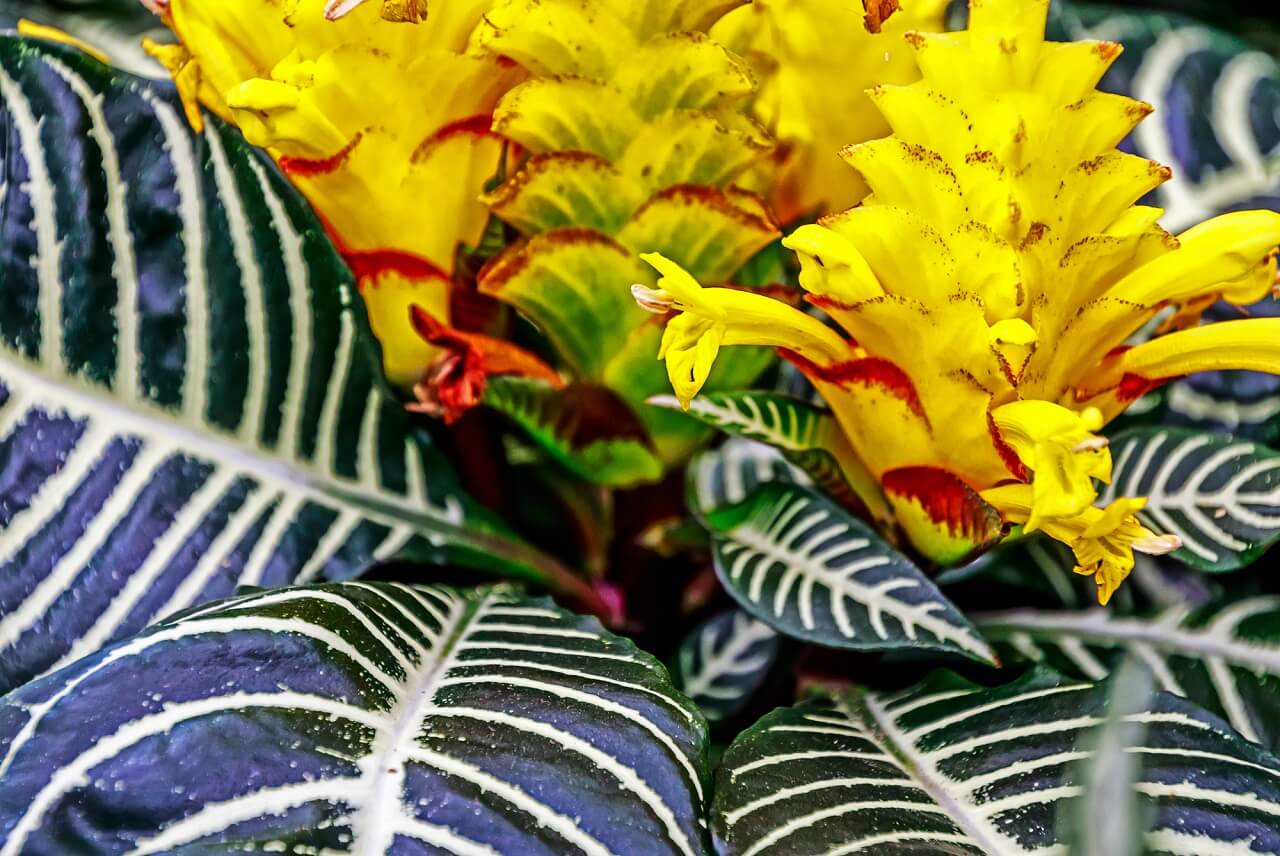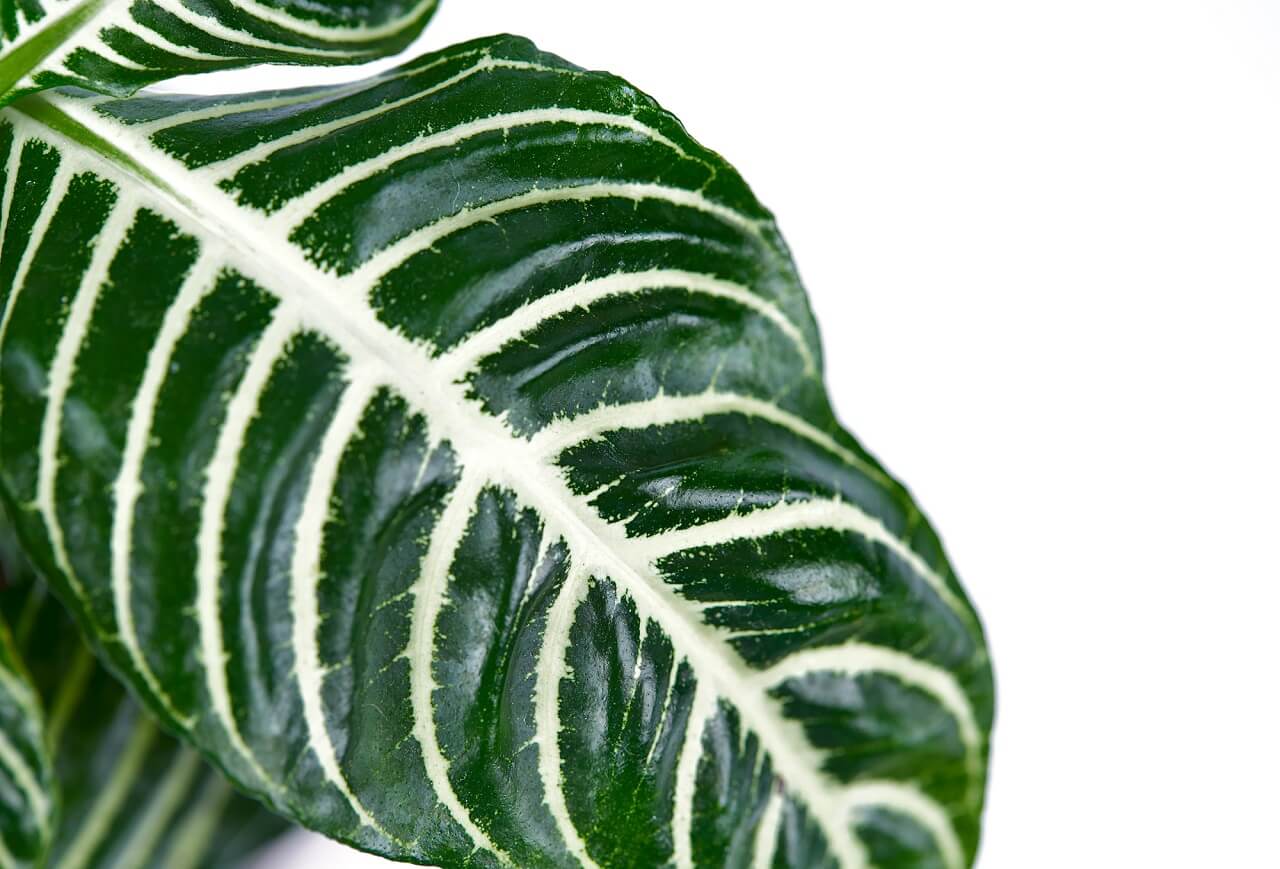Pruning is one of the main components of being a zebra plant parent. Not only does it keep your plant healthy, but it also encourages a gorgeous growth pattern. It may seem kind of intimidating given their dramatic nature, but pruning a zebra plant is simple. In this article, we’ll let you know when it’s a good idea to trim your plant and the best way to go about it.
What You'll Learn Today
Should I Trim My Zebra Plant?

Zebra plants definitely need some maintenance throughout the year to keep them healthy and looking their best. Many new zebra plant owners struggle with figuring out when to prune them. You’ll know it’s time to prune when:
- The stems are long with smaller tufts of leaves at the top: If your zebra plant is looking particularly lanky and leggy, it’s time to prune. You should also try to figure out why it’s growing that way – more on that later.
- It’s done flowering (flowers have died): Depending on your home environment, you may not ever see your zebra plant produce flowers, and that’s okay! The foliage is beautiful enough on its own. The flowers are just a bonus. But if it does bloom, you should remove the flowers as soon as they’ve died off. This allows the plant to allocate more energy to its leaves, rather than the spent flower.
- The plant is bigger than you want it to be: It’s perfectly fine to trim your plant to suit your aesthetic preferences. Some people prefer neat, compact zebra plants, while others dig the wild, natural look.
Why is My Zebra Plant Leggy?
Zebra plants have a tendency to get leggy for two main reasons:
- The flowers have died
- It needs more light
If your plant recently flowered and you left the flower bract there, it may start to lose leaves on the bottom, giving it a leggy look. The flower bract is a specialized kind of leaf that supports the flower.
Plants that flower put a significant amount of energy into blooming. Zebra plants will keep spending energy on the flower bract after the flowers die and drop leaves in the process unless you remove the entire bract.
If your zebra plant looks leggy even though it has not flowered at all, it could be reaching out for some sunlight. Sparse lower stems with leaves clustered at the top of the plant is a classic sign of a plant that’s lacking sun.
If this is the case, try moving it to a brighter spot. The best spot for your zebra plant is as bright as it can possibly be without getting any direct sunlight.
A few feet away from a southern-facing window is a good spot for bright, indirect light. You could also try supplementing with a grow light to ensure it gets the light it needs. Zebra plants are also more likely to flower when they get extra light.
How Do You Prune a Zebra Plant?

While you can remove dead leaves and flowers at any time, you should try to wait until spring to do any serious pruning. The beginning of the growing season is a great time to prune any plant, as that is when they’ll recover and grow back most efficiently.
If it’s time to trim your zebra plant, here’s the process:
Step 1: Find Clean, Sharp Shears
This is a step that sometimes gets overlooked or dismissed but is very important. Plant disease can go unnoticed for a while. If you don’t sanitize your pruning shears after working with an infected plant, you could unknowingly spread disease to your other houseplants.
Sharp shears are important as well since dull blades can lead to jagged cuts, which can result in the wound becoming infected.
Step 2: Remove Dead Leaves/Flowers
Snip any yellowed, browning, or damaged leaves at the base of the stem. If there are flowers, remove the ones that are dead.
Step 3: Cut Empty Bracts
If your zebra plant has recently finished flowering and all the flowers are spent, remove the entire spike where the flower came from. This should encourage new foliage to grow in bushier.
Step 4: Trim Out of Place Stems
This step is all about personal preference. If there are any stems that are growing in a different direction than the rest and you don’t like how it looks, feel free to snip a few stems off.
Step 5: Propagate (Optional)
If you’re pruning any nice, healthy-looking stems with leaves on them, this is a perfect opportunity to make some more plants. To do this, find a section of the plant that’s 4-6 inches long and has at least 2 sets of healthy leaves on it.
Take your shears and cut the stem at a 45-degree angle just below a leaf node. Then, remove the lowest set of leaves, which is where the roots should come out of.
Next, you can either propagate the plant in soil or water. Some people prefer rooting plants in water because you can easily monitor the roots.
Others maintain that rooting zebra plants in soil leads to stronger roots. It’s also more convenient since you won’t have to repot once it’s rooted if it’s in an appropriate container.
Whatever your vessel may be, keep the cutting in a warm, bright, humid area to maximize the chances of it establishing roots. This could take anywhere from 6 weeks to 3 months. Patience is key.
For a great overview on propagating 18 different plants, check out this video:
Zebra plants, along with most houseplants, can handle more pruning than you might think. So even if you make the mistake of cutting off a beautiful leaf that you didn’t mean to cut, your plant will be fine. As long as you don’t remove over ¼ of the foliage from the plant, you’re free to experiment and trim away.
My Zebra Plant flowered for the first time this year and I don’t know what to do! Should I deadhead it?
Yes, this is the best way to encourage new growth. Removing the spent flowers will not only make your plant look better, but it will allow it to put more of its energy into growing healthy new foliage.